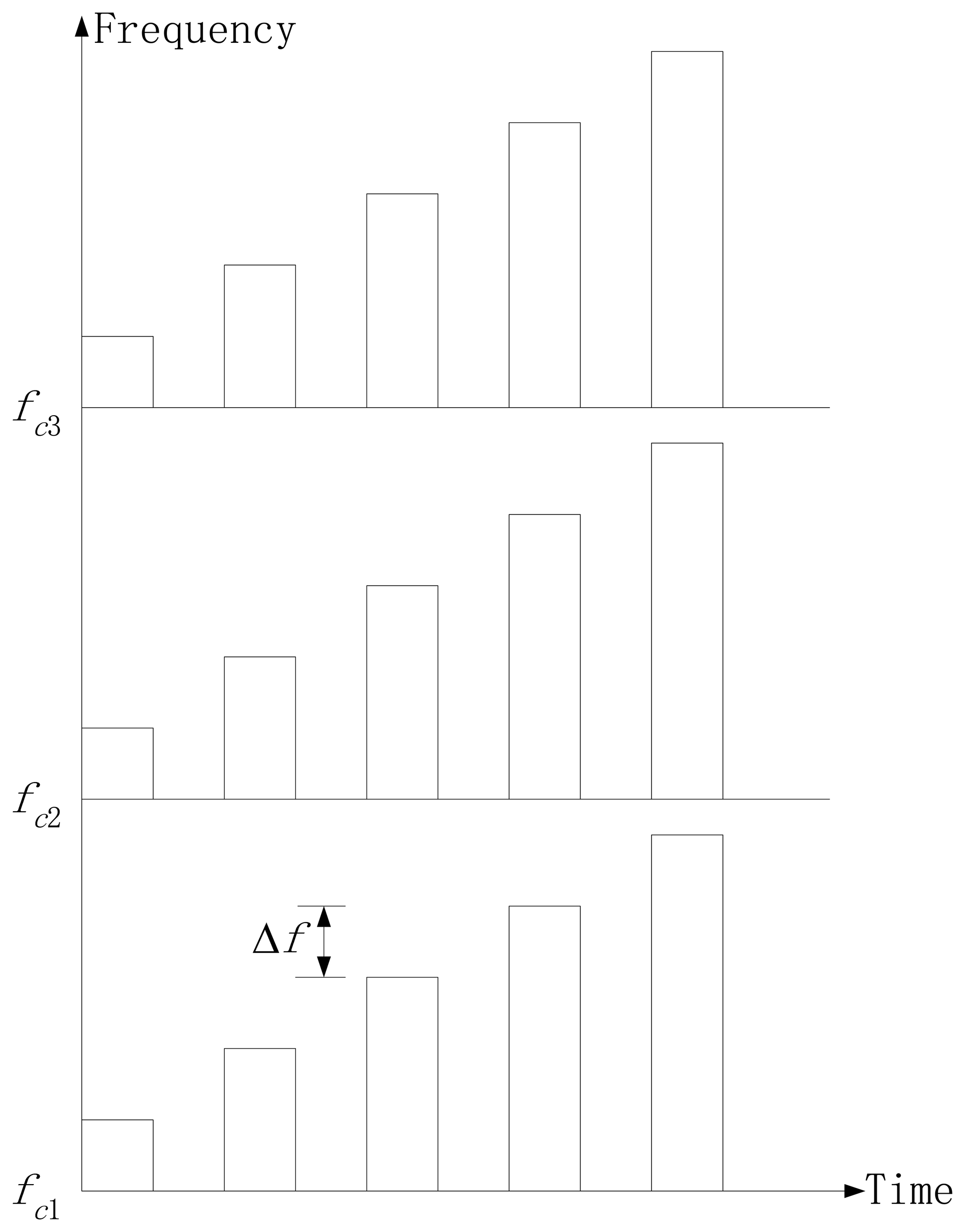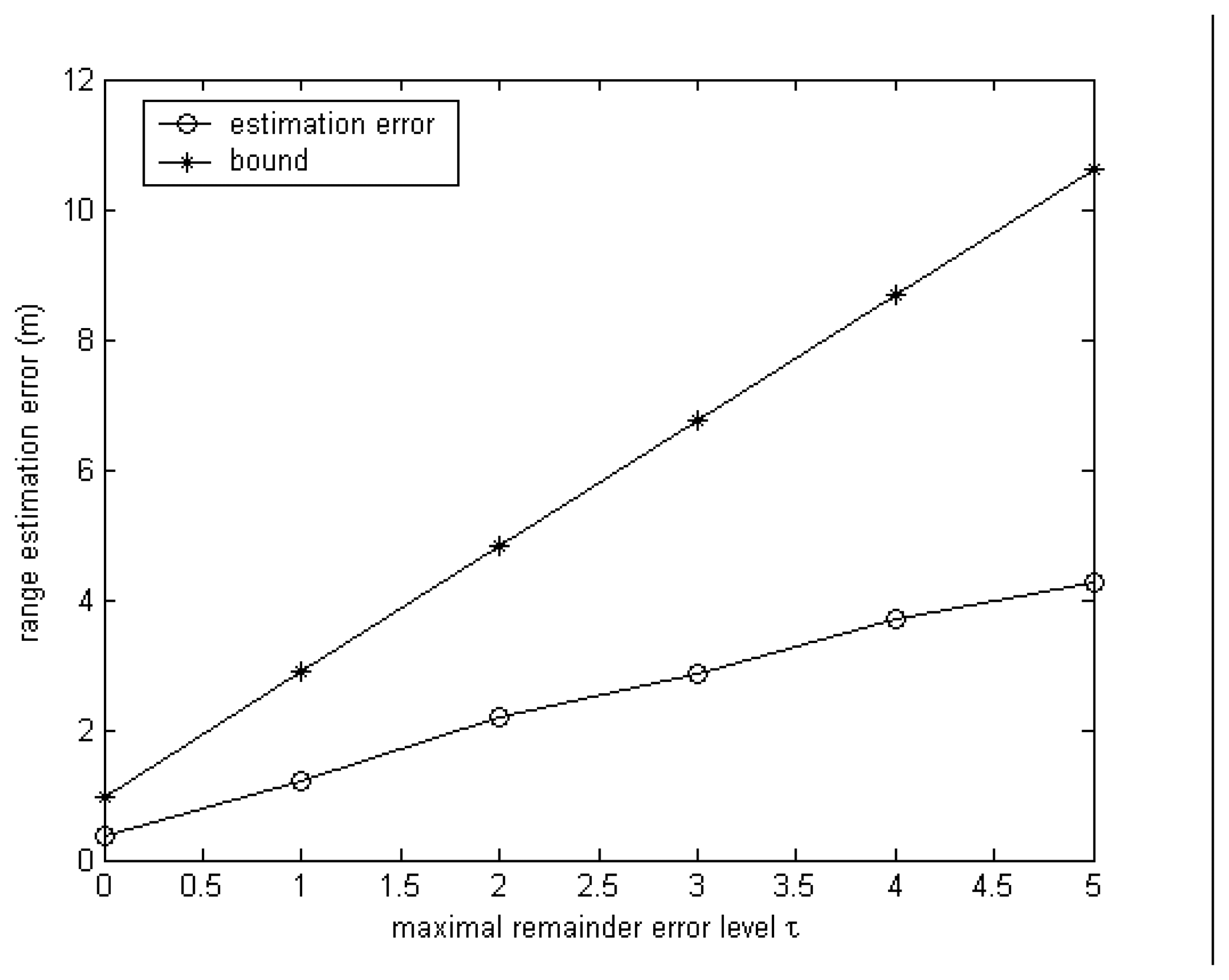Range and Velocity Estimation of Moving Targets Using Multiple Stepped-frequency Pulse Trains
Abstract
:1. Introduction
2. Single Stepped-Frequency Pulse Train Processing
3. Multiple Stepped-Frequency Pulse Trains Processing
4. Numerical Examples
5. Conclusion
Acknowledgments
References and Notes
- Rihaczek, W. Principles of high resolution radar; McCraw-Hill, 1969. [Google Scholar]
- Farnet, E. C.; Stevens, G. H. Pulse compression radar. Skolnik, M. I., Ed.; In Radar handbook, 2nd; McCraw-Hill, 1990. [Google Scholar]
- Brenner, A. R.; Ender, J. H. G. Demonstration of advanced reconnaissance techniques with the airborne SAR/GMTI sensor PAMIR. IEE Proceedings – Radar, Sonar & Navigation 2006, 153(2), 152–162. [Google Scholar]
- Levanon, N. Stepped-frequency pulse-train radar signal. IEE Proceedings – Radar, Sonar & Navigation 2002, 149(6), 297–309. [Google Scholar]
- Chen, H.-Y.; Liu, Y.-X.; Jiang, W.-D.; Guo, G.-R. A new approach for synthesizing the range profile of moving targets via stepped-frequency waveforms. IEEE Geoscience and Remote Sensing Letters 2006, 3(3), 406–409. [Google Scholar]
- Axelsson, S. R. J. Analysis of random step frequency radar and comparison with experiments. IEEE Transactions on Geoscience and Remote Sensing 2007, 45(4), 890–904. [Google Scholar]
- Zhang, Q.; Yeo, T. S. ISAR imaging in strong ground clutter using a new stepped-frequency signal format. IEEE Transactions on Geoscience and Remote Sensing 2003, 41(5), 948–952. [Google Scholar]
- Xia, X.-G.; Wang, G. Phase unwrapping and a robust Chinese remainder theorem. IEEE Signal Processing Letters 2007, 14(4), 247–250. [Google Scholar]
- Li, G.; Xu, J.; Peng, Y.-N.; Xia, X.-G. An efficient implementation of a robust phase-unwrapping algorithm. IEEE Signal Processing Letters 2007, 14(6), 393–396. [Google Scholar]



© 2008 by MDPI Reproduction is permitted for noncommercial purposes.
Share and Cite
Li, G.; Meng, H.; Xia, X.-G.; Peng, Y.-N. Range and Velocity Estimation of Moving Targets Using Multiple Stepped-frequency Pulse Trains. Sensors 2008, 8, 1343-1350. https://doi.org/10.3390/s8021343
Li G, Meng H, Xia X-G, Peng Y-N. Range and Velocity Estimation of Moving Targets Using Multiple Stepped-frequency Pulse Trains. Sensors. 2008; 8(2):1343-1350. https://doi.org/10.3390/s8021343
Chicago/Turabian StyleLi, Gang, Huadong Meng, Xiang-Gen Xia, and Ying-Ning Peng. 2008. "Range and Velocity Estimation of Moving Targets Using Multiple Stepped-frequency Pulse Trains" Sensors 8, no. 2: 1343-1350. https://doi.org/10.3390/s8021343



